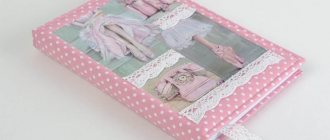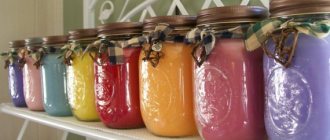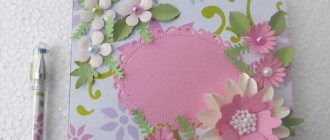Indoor flowers in flowerpots are a wonderful way to decorate an apartment or house, making the room more lively and cozy.
In this article we offer you interesting ideas on how to make beautiful hanging flower pots using a variety of materials, such as wood, leather, twine and other available materials.
Also 5 step-by-step master classes with diagrams and photos on how to weave flower pots quickly and easily with your own hands and create a truly beautiful interior decor.
Leather plant pots
Leather hanging flower pots are easy to make and look very original. Add a little style to your home decor with this wonderful leather planter. It can definitely become the highlight that makes the interior unique.
Master class: leather hanging planter
Necessary materials:
- Distilled (purified) water
- Tracing paper (21x28 cm) and 4 pieces of strong rope (or leather laces), each approximately 90-120 cm in length
- Leather dye (optional) and gloves
- Leather (square size 30x30 cm)
- Packing tape, a pencil and a utility knife
- Computer and printer (to print the template) and template
- Sponge for wetting and staining
Step-by-step diagram:
Step 1: Preparation and Placement
Print the factory hanger template on tracing paper. Lay the template down on the wrong side of the leather and choose the ideal placement (not too close to the sides to avoid any imperfections in the leather).
Step 3: Soften the skin
Dip the sponge into purified water and then apply the moisture evenly to the skin. Repeat this step at least three times until the skin looks like it can't take in any more water. This will soften the skin and make it easier for us to weave the flowerpots.
Step 4: Transferring the Template
Now place the template in the previously chosen place and tape it on the sides so that it does not move to the sides. Using a simple pencil, draw the lines printed on the tracing paper, pressing the pencil with medium force. Be careful and don't miss any line.
Step 5: Cutting
Now remove the template from the leather to see how the design has been transferred to the surface of the leather. Using a utility knife, make cuts along the lines.
For convenience, you can first cut a circle along the outer contour. The cuts should be clearly along the drawn lines.
Step 6. Coloring
Note: This step is optional and depends on the color you want and the materials you have on hand. In our case, we painted the leather dark brown.
After the skin has dried from moisture (at least one hour), apply the desired dye. Apply the paint using a sponge (wearing gloves) until the desired effect is achieved.
As the leather dries, pull it back a little at a time to create a voluminous shape. You will begin to see the leather distort, continue to pull and stretch it to create the shape of the pot as it should be when finished.
Step 8: Hanging
- Once the leather is completely dry and the shape of the planter is formed, punch four holes in the top to thread the strings through.
- You should place them evenly, at the same distance from each other, so that the hanging flower pot does not tilt in one direction.
- Take four ropes (regular or leather) and tie a knot in each of them, pulling it tightly at the end.
Step 9: Decoration and installation
Add tassels, beads, studs - whatever is needed to achieve the desired style in the end. At the top of the hanging cords, gather all four of them together and tie them into a knot.
You can use this knot to hook onto a ceiling hook and/or ring. See if the length of the pendant suits you; if necessary, tie the knot at a different level.
DIY weaving patterns for flower pots
Once the first macrame techniques have been mastered, weaving flower pots with your own hands can become more complicated.
To securely hang pots, metal, plastic or wooden rings are most often used. The threads attached to them can be decorated with textured knots, as in the presented photo.
If you don’t have a ready-made ring at hand, you can easily make a fastening loop yourself by tying a bunch of twine at the top of the flowerpot and then connecting it using working threads.
On the proposed diagram:
At the bottom of the product, a brush is made from the remaining rope ends. To make it look neat and impressive, you can tie strong knots on the threads or attach beads of suitable size and tone to them.
When finished, the handmade flowerpot looks very attractive. Despite its lightness, it will hold the flower pot perfectly.
Video lessons on weaving macrame and flowerpots using this fascinating technique, designed for beginners, will help you understand the intricacies of the process, master the main knots and calculate the amount of material needed.
Hanging planter made from straws
This pot will suit the interior with an innovative touch. Transform and complement your home decor with these neon straws and thread stands. Moreover, even 15 minutes will be enough for you!
Necessary materials:
- Neon threads
- neon straws (8 pieces per pot)
- flower pots for indoor flowers (we used white ones made of melamine)
- house plants (succulents)
- scissors
How to weave - instructions:
Step 1: Cutting the threads
Cut eight pieces of neon cord, each 90-150 cm long, depending on how close to the ceiling you want to place the pots.
Step 2: Making a Knot
Take the newly cut strands together and tie a knot at one end, creating a tassel from the small excess cord at one end.
Step 3: Divide the threads into sections
Lay out the rope into four sections (like a cross shape). That is, two ropes in each section.
Step 4: Cutting the Straws
- Cut off the small part of the straws that is separated by the spring. Then cut it in half. Take eight of these small pieces and thread a thread into each of them.
- Move the straws towards the center (knot) and make a knot on every two strands (in sections). This is what it will look like:
- Arrange the threads again in a cross shape, two threads per section. Only now, to form a section, take one thread at a time from the previously adjacent sections.
- Cut the straws into pieces (16 in total) , each of which should be the size of the part of the straw that is separated by a spring.
- Thread a thread through each of and make knots in the threads from one section.
- Similarly, arrange 2 threads in a cross shape, one from adjacent sections.
Add the third and final set of straws to the threads and tie adjacent threads (similar to the previous set).
Step 5: Hanging
All that remains is to hang the flowerpot and insert a flowerpot with indoor flowers into it. Make several pieces, then together they will create a beautiful composition.
And neon straws will also glow a little at night, which will look very original.
DIY macrame flower pot patterns: tools and materials
Before you start knitting a pot, you need to purchase some materials. One of the advantages of the macrame technique is that the main components of such products are threads, which are relatively inexpensive.
Thick threads of white or beige color will be a win-win option for pots; they are suitable for absolutely any interior. Also, a hanging stand for pots, woven from cords with a gradient transition of shades, will look unusual.
In addition to threads, in order to weave a flowerpot, you will need a number of tools and accessories, some of which you can make yourself or find at home.
Materials and tools for weaving a simple flowerpot:
- Thick threads - approximately 40 meters;
- Tailor's pins;
- A special pillow or any homemade device for pinning the product;
- A ring on which all the weaving of the flower pots will be lined up;
- Rubber bands for money;
- Flower pot;
- Scissors;
- Soldering iron or lighter.
Instead of a macrame pillow, you can take an old upholstered chair seat or sew a similar structure on a rigid base yourself. Eyelets for curtains, metal key rings, or any other fittings of a suitable shape and size can be used as a ring for a flowerpot.
Macrame flower pots
The macrame technique probably has the most variations in making pots. They can be either very simple, which can be done in literally 10-15 minutes with your own hands, or complex with many hours of work. Practice weaving first on easy ones, hone your skills, and then improve.
Master class: Do-it-yourself macrame weaving
Macrame is back in fashion again, as is handicrafts in general. In this master class you will learn how to make a hanging plant pot with your own hands using this technique. There is nothing complicated, just follow the instructions and you will succeed!
Necessary materials:
- 3 cords 2.5 m long and 0.5 cm thick
- Metal ring with a diameter of 2.5-3 cm
- Hook (on the wall, slot) to hold the macrame while working
- Scissors and colored rope
- Glass pot in the shape of a ball with a diameter of 20 cm
- Drainage stones and soil
- Houseplants that climb (eg Stephanotis)
- Decorative moss (optional)
Step-by-step instruction:
Step 1: Thread the ropes into the ring
Pull all three ropes through the metal ring until the ring is in the middle of the ropes. Thus, you now have six ropes to work with, each 1.25 m long.
Step 2: Making a Knot
- From all six ropes, tie a knot right next to the ring. Make it as tight as possible; to do this, after forming the knot, pull each rope separately.
- Hang the ring on a hook (if there is no hook, then use a separate small rope to tie it to a cabinet handle or something like that, the main thing is to secure it). This will allow you to use both hands while working.
Step 3: Divide the cords into groups
- Divide the cords into three groups, two in each . Tie a knot in each pair 45cm below the ring. You will have three knots at the same level, make sure they are tight.
- Take one rope from two adjacent pairs and tie them together about 12 cm below the previous knot .
Repeat the previous step with the remaining ropes so that they are all tied together. This will create a zigzag pattern between the cords.
Step 4: End Node
- About 12 -15 cm below the second set of knots , gather all six ropes together to make one large end knot. Pull each cord individually to make the knot as tight as possible.
- See how long you need to leave and cut the ropes to the size you need.
- Wrap colorful threads around the rope in several places, creating blocks several centimeters long. This stage is decorative and is performed at will. Now the macrame pendant is ready and you can place the pot in it.
Step 5: Planting indoor flowers
Place drainage stones in the bottom of the glass pot to create a layer about 2.5 cm high. Fill the rest of the bowl with soil.
- Remove the plant from the temporary pot and place it in a glass container. Apply water and press down on the soil to compact it. You can place decorative moss on top of the soil if desired.
- Place the glass bowl with the flower over the lowest knot and spread the ropes to the sides to secure well.
- Straighten the plant if it gets tangled in the strings. Hang it and admire the beauty of the plant and your own product.
Macrame patterns for flowerpots
Here are a few more patterns for those who want to master macrame weaving. They are very simple - suitable even for beginners. We look at the photo and repeat. Clothesline or thin twine are perfect materials. The minimum consumption for a hanging planter is 10 meters of rope.
Basics of weaving macrame and DIY flower pots
Despite the apparent complexity, mastering macrame techniques and weaving flower pots with your own hands is a task that is feasible for both children and adults.
Descriptions of the main components and graphic diagrams will help you quickly learn the basics. The simplest design of such a pot allows you to do it even without basic knowledge. To work you will need:
- a durable metal ring that will serve as a suspension;
- three pieces of rope.
Each part should be at least 2.5 times the length of the flower pot woven using macrame. When all preparatory work is completed, the sections:
- alternately threaded into the ring;
- fold in half;
- secured with a common knot.
Making flower pots with your own hands follows the macrame pattern. Visual illustrations greatly simplify the process and prevent errors in calculations.
When finished, a pot for house plants made using the macrame technique turns out to be very light, openwork, equally suitable for large and very small pots.
Wooden flower pots
Wood also provides a fairly wide range of actions, various shapes and colors. Choose what you like best and create.
Master class: hanging wooden planter
This hanging planter will wonderfully complement your home interior. It’s quick and easy to do, and it won’t cost you a lot of money on materials either. The optimal solution for an apartment.
Necessary materials:
- Wooden plate and saw
- House plants and flowerpots
- Rope and metal ring
- Drill and sandpaper
- Paint and brush
Step-by-step manufacturing scheme:
Step 1: Making Wooden Squares
Consider how many tiers your flower stand will have ( there are 4 here, but you can do more or less ). Select the houseplants you want to place there.
Based on all this, cut out the required number of squares from the wooden plate.
- To do this, turn the pot upside down and place it on a plate, circle it and leave about 5 cm , thus determining the size of the square.
- Use a saw to make squares .
Step 2: Making holes for the pots
- You already have a circle drawn on the tree from the top of the pot, now you need to draw another one in the middle so that their centers coincide, but the diameter of the new one is about 1-2 cm smaller.
- This value depends on how quickly the pot you will be placing in the stand grows towards the top, and also you want the wooden square to be almost at the very top, or in the center of the pot .
- You can take another pot that is the same size as the stencil and trace it.
- Use a jigsaw to cut out this new circle. For convenience, you can first make a hole with a drill and, starting from there, work with a jigsaw.
- The pots should now fit inside the squares.
Step 3: Hanging Holes
At the corners of the squares you need to make holes for the rope so that they can be hung. To do this, use a drill with a diameter of up to 1 cm.
Step 4: Paint the tree
Using sandpaper, remove roughness and unevenness that formed after sawing and drilling. Now the wood can be painted or simply treated with an antiseptic. In this case, dark brown paint was used.
Step 5: Paint the pots
Pots can also be painted, if desired. Casual strokes of white paint look good on plain clay pots. You can skip this step.
Step 6: Putting it all together
In order to fasten the wooden squares together, we need a thick rope: cut 4 ropes of 180 cm each (for the given number of tiers). Stretch one rope into each corner hole of one of the squares and tie a knot at the end, this will be the lower part of the structure.
On each rope, tie another knot 25-30 cm higher than the previous one and thread the ropes into the holes of the next square. Check that everything is level and the second tier is clearly horizontal above the first, adjust the knots if necessary. The second tier is ready. Repeat these steps with the remaining tiers.
Step 7: Plant the Plants
A practical advantage of such a hanging stand is that water that may flow down after watering from the top plant will drip onto the bottom one. So a stand for the pot is needed only on the lowest tier (if you use it outdoors, you can do without stands at all).
You can also place coffee filters or similar water-absorbing materials in the bottom of the pots, this way the water can drain out but the soil won't fall out through the hole.
TIP: To prevent the bottom pot from falling off the stand if someone accidentally snags the string, superglue it to the pot.
Step 8: Transplant the plants into prepared pots.
If you glue the base of the lower pot before inserting it into the wooden square, it will look like the photo below. If you want the bottom pot to be inserted into the tree in the same way as the others, then first replant the plants, insert the pots into the holes in the tree, and only then glue the stand to the bottom one.
Step 9: Hanging
- To hang this structure, thread the ropes through a metal ring and tie a knot, or bend them over and tie another thin rope around them.
- Adjust the rope so that all tiers are horizontal and level.
This stand will decorate an empty corner in an apartment , just don’t forget that flowers need enough light.
A hanging stand is a wonderful solution for those who love flowers, but do not have enough space to display them.
Ideas for making your own flower pots in macrame style
An original decoration will be pieces of straws for cocktails. In combination with a bright cord, they make macrame flower pots surprisingly cheerful, while helping to fix the desired shape and, even with a minimum of knots, securely hold the pot.
Another spectacular and at the same time useful addition is beads made of plastic or wood. With their help, you can not only give the product a special charm, but also significantly simplify the patterns of weaving macrame flowerpots for beginners in mastering macrame. Beads or large durable buttons are a great replacement for knots on the sides. Among other things, this connection is movable and allows you to gently adjust the height of the flowerpot and the position of the pot in it.
For several small plants, using macrame it is easy to make a convenient stand. In addition to strong rope, in this case you will need a wooden cutting board of a suitable size. To protect the material from moisture, it should be treated with fine sandpaper and then coated with acrylic varnish.
If there are a lot of flowers in the house, a kind of multi-tiered shelf will help each plant find its rightful place. Strong rope knots level each level and secure its position.
There are incredibly many designs for flower pots using the macrame technique. Having gained sufficient experience, you can independently look for unique options, decorating your home with unusual, very useful crafts.
Video tutorial on weaving macrame flower pots
How to diversify the interior of a country house or a private house without spending a large amount of money? An excellent solution to this problem would be flower pots knitted using the macrame technique. Making these DIY pendants won't take you much time, but they will definitely add charm to a rustic room. Macrame pots can also be used in modern apartments, replacing plastic or clay pots with a small round aquarium made of transparent glass, where you can place a bouquet of wild flowers. It will take very little time and materials to make such a decorative and very functional item.
In order for a flowerpot woven using the macrame technique to serve you for many years, and its manufacture to bring you a lot of pleasure, you need to familiarize yourself with some nuances. They concern not only the choice of threads, but also the use of other materials in the weaving process.
Tips for making flowerpots using the macrame technique:
- Flower pots can handle quite a lot of stress, so the threads you choose to make them must be very durable;
- It is most convenient to hang the finished flowerpot not by a woven loop, but by a metal carabiner; in this case, the risk of fraying the threads is significantly reduced;
- The choice of thread thickness directly depends on the weight of the pot for indoor plants: the heavier the vessel, the thicker the thread should be;
- If you want to knit a flower pot for a clay pot, it is better to use a plastic analogue of the same volume to measure the size of the product, otherwise you risk breaking the pottery;
- To decorate macrame pots, you can use multi-colored large beads, fringe or fluffy tassels.
- The shade of the threads must be chosen in accordance with the color of the interior and the flower pot itself.
These tips will allow you to make a stylish and high-quality product in a short time, which will greatly facilitate the design of the interior of the room. The most important advantage of wicker flowerpots is that you don’t have to free up space on the windowsill for the pots placed in them.
Pot made of copper pipes
The manufacturing principle is similar to that described in the previous master class, only here copper tubes are used (and they are folded into a slightly different pattern). Of course, these materials will be more expensive than straws, and cutting them is not so fast, but in general there is no difficulty, and it turns out beautifully and with high quality.
TIP: If desired, the copper tubes can be replaced with plastic cocktail straws
Necessary materials:
- 2 m copper tube with a diameter of approximately 3 mm
- Mini pipe cutter
- Strong thread or fishing line
- Leather string (length depends on how high you want to hang the pot)
- small pot
- Plant
Step by step weaving:
Step 1: Cutting the tubes
You need to cut the tube into the following pieces: 20 pieces 4 cm long and 5 pieces 24 cm long. Cut the long pieces first, and then the small ones, it will be more convenient. Use a measuring tape for measurements.
Step 2: Start folding the tubes
Tie a knot at one end of the fishing line, and thread the other through 5 small pieces of tube so that you get a pentagon (that is, you need to pass the fishing line through the first piece of tube twice).
Step 3: Continue making pentagons from small tubes
- Pass the line through 4 more tubes of the same size , and then through the tube of the previously formed pentagon. Now the fishing line is in the tube connecting the pentagons, and you need to bring it through the upper tubes of the newly obtained pentagon to its left edge.
- Don't worry if they don't look perfect, everything will straighten out when you hang and place the pot.
- Next, make 2 more pentagons , you should get 4 pieces in total, and they should be located as in the photo below.
- Now bring the line through the tubes to the bottom of the outer pentagon and put the tube on it. Next, thread the line through one edge of the other outermost pentagon.
This is what you should get:
Pass the line through 2 more tubes, and then through the edge of the pentagon, as in the photo below. It should look like something like a flower, or rather like this:
Step 4: String Long Tubes
- Bring the line to one of the highest points of the structure (between the two upper tubes of one of the pentagons). Now the fishing line needs to be threaded through a long tube.
- Thread the line through another long tube, and then direct it to the next highest point of the pentagon structure (any one, not necessarily the adjacent one).
- Thread the wire through the 2 small tubes to reach the next highest point. Now pass through another long tube, the line will come out to the junction of the long tubes, return the line back down through one of the previous two long tubes. Attach the fourth tube in the same way.
- Now all you have to do is attach the last tube, but first place the pot in the middle of the structure, otherwise later it will not fit between the tubes.
- Now attach the last tube. This is what you should get:
Step 5: Attach the leather lace
Cut about 30cm of leather cord and attach it to the connecting point of the long tubes. You can tie a knot, but here, for aesthetics, we used hot glue to secure the neatly folded end of the cord. This is what it looks like:
To prevent the gluing area from being visible, cut another small piece of cord, secure it with hot glue, and wrap it around the cord by which we will hang it.
Trim excess fishing line and cord. And the last step: plant your favorite indoor plants!
How to crochet flower pots, and from what threads: diagrams with descriptions
Eye-catching flowerpots are preferably made of bright yarn, and there are no restrictions in the choice of texture. It is desirable, however, that it be acrylic or thin cotton.
Pattern for knitting flowerpots
So, if the bottom is still needed, then knitting should start with it.
If not, then you should start with a chain of air loops that matches the length of the bottom of the pot. This chain needs to be closed, after which, following the pattern, continue knitting upwards. In this case, you need to add loops in every third row.
A cross with a dash means that the hook is inserted exclusively under the back or front wall of the loop. You will get a nice finish at the bottom and top of the plant pot.
These are the kind of pots you can knit
Where to hang the pots
Moreover, in the summer, plants can be placed both inside and outside the house, but since it’s cold now, we’ll focus on indoor ones. You can green any room in your apartment, kitchen or hallway, the main thing is to take into account the needs of the plants and the right amount of light. In fact, each version of a hanging planter can be placed in any room of the apartment, so it is only your design decision.
Of course, you can just put a flower pot on the windowsill or bedside table, and it will already look good. But if you try a little more, you can decorate the appearance of the pots and make more optimal use of the apartment space, at the same time arranging the plants and not taking up extra space with them (with hanging flowerpots).
Above the workplace
Here, a hanging planter will not take up much space, especially since we always try to place the work table closer to the window, which will really appeal to indoor plants.
In the bedroom
Placing plants in the bedroom is not only beautiful, but also very useful. They enrich the room with oxygen. How nice it is to wake up among greenery. Try hanging a pot of plants in your bedroom.
In the kitchen
This is an ideal option; you will never snag or overturn a flowerpot. The flowerpot looks very homey in the kitchen!
On the balcony or in the chill-out area
If the area of your apartment allows, then with the help of hanging flower pots, you can green up an entire room and make a mini-garden. But spruce does not have enough square footage - you can arrange a comfortable seating area on the balcony.
Exquisite flowerpot
Masterpieces filled with luxurious elegance and airy grace are born using the macrame technique. They are appropriate in any stylistic direction. Wickerwork will add a special charm to country and Provence furnishings. Hand-knitted pots will help not only make the interior more comfortable and improve the atmosphere, but also decorate the plant itself.
DIY flower pots
We offer a master class for those who have already mastered the basic skills of art. To work, you will need a round glass flowerpot, a durable nylon cord of medium thickness, scissors and tape.
The work is as follows:
- We collect eight threads, bend them in half to form a loop. Using the ninth thread, we intercept the bundle, wrapping it several times. We fix it and cut off the rest with scissors.
- Next, we divide the bundle of cords into four groups, each of them should contain four threads.
- Let's start weaving. The work pattern uses simple twisted chains, flat knots for the mesh that holds the glass flowerpot, as well as square knots.
- The main mesh is knitted with simple flat elements.
- When weaving is completed, the ends of the threads are carefully trimmed. To prevent them from fluffing up over time, you can scorch them with fire so that they melt. Each end of the cord can be decorated with macrame tassels.
This pot can be used not only for flower pots. The products will decorate a room, balcony or terrace of the house if you place transparent vases with flowers in them.
Openwork flowerpot
The peculiarity of macrame is its simplicity and the fascinating process of knitting elements. In a matter of hours you can create amazing things that will become an original gift for your home.
Pot ideas from scrap materials
If you show your imagination, you can make a hanging plant pot from absolutely any available materials. Starting from old cans, bottles to unnecessary towels and T-shirts.
From beads
If you have old beads lying around and you don’t know what to do with them, then here’s one option to solve the problem - decorate the pots.
From baskets and pots
Such pots can be used for a single pot or for several at once. Such wicker baskets will probably be found in many homes. They often lie idle, and in vain they will make an excellent hanging for flowers.
Flowerpots in high-tech style
Modern pendants made of concrete or brass will fit into the modern style of the apartment.
From bottles
Probably the cheapest of all methods, but it looks no worse than the others. We collect empty plastic and glass bottles and make original flower pots.
From moss and shells
Many people at home have shells brought from the seas, and if you drill a small hole and plant small succulents there, you can create a mini-pots. The main thing is in quantity, 3-8 pieces will create an excellent hanging garden.
We make flowerpots using the macrame technique for flowers with our own hands
You will need:
- Material - threads, approximately 20 - 25 meters.
- Scissors
- Working surface
- Pins or paper fasteners
As you know, one of the most common knots is the double flat knot. It is not only simple to make, but also beautiful. It consists of two simple nodes - a right one and a left one. Schemes for making such knots will not be difficult for a beginning craftswoman. Today, macrame is often used to decorate rooms and give them a more formal look. Initially, macrame was called knot weaving. And only in the last century they began to call it the capacious word “macrame”.
We attach the threads to the support. They must have 4 ends. We place the right thread on top of the left one, which in turn is located across the warp. We form a loop from the left thread. We pull the end of the right thread under the warp. We pull it into the loop from the left thread. Slowly pull the outer threads and you get a knot. In order to weave a right-handed knot, we perform these operations in reverse. By tying these knots we get a double flat knot.
Thus, by continuing weaving you get a support tape for the flowerpots. When the support tape is ready, take it as a base for the pot. How to knit a pot will be clearer if you have a pot on hand. This will make it easier for you to figure out what size your macrame pot will be. There are many knots in the macrame technique. It will be useful to study the instructions for making some of them. For example, the “Josephine” knot will help to continue the craft.
When you decide on the choice of the knot you need for your craft, tie it around the pot. Secure your product with a tight knot under the bottom of the flower pot. If you still have thread left, trim it with scissors and possibly fluff it up.
Flowerpots are widely used as an interesting interior detail.
It can serve as an unusual decoration. To make such a decorative craft with your own hands, you will need:
- White cord
- Glass vase
- Scissors
- Scotch
- Artificial daisies
- We collect 8 threads and bend them in the middle.
We wrap them with another thread and secure them.
We cut the thread with which we wrapped the assembled cords.
We divide the bundle of threads into 4 groups, each bundle has 4 threads.
We weave with a double-sided knot.
Tie the ends of the thread, trim and secure with a lighter. It is possible to decorate the ends with a brush. Secure the vase into your new planter and place decorative daisies inside the vase.
A simple flowerpot for small flowerpots
For the creative process you will need basic material, this could be cotton threads or twine.
For fixation, novice craftsmen can use adhesive tape. With experience in weaving, all fixing elements will be only knots.
Tools you will need are scissors with a sharp blade, mounting pins and a work surface. If you are weaving flower pots or any other product using the macrame technique, the process begins with knitting double flat knots. Not only is it easy to make, but it also comes together in a beautiful pattern.
Products made using the macrame technique will not leave anyone indifferent with their grace and beauty.
Algorithm for creating a simple flowerpot:
- We fasten the threads to the working support. There should be four ends. The right thread is placed on top of the leftmost thread, it is located across the warp.
- We get a loop, then we draw the right part under the base, pull it into the loop, and slowly and carefully tighten the outer ends. To tie a right-hand knot, we will do everything exactly, but start from the left side.
- We knit two elements in a mirror image, we get the first element of the pattern. We continue in the same way and weave a support tape of the required length.
- We weave the warp. It is important to accurately measure the diameter of the pot so that it “sits” firmly in the flowerpot in the future. Having chosen a pattern for weaving a knot, we tie the pot itself, securing the work at the end with a tight knot under the bottom of the flowerpot.
- If the thread remains, you can carefully cut it off or fluff it, giving the flowerpot an original look.
A product made using the macrame technique will become a useful interior detail, decorate the room, giving it a cozy look.
Hanging planter part 1
Hanging two-story planter part 2










